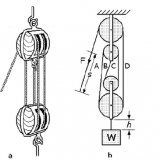Robot Swarms Could Help Colonize Mars I-SWARM Project 31018
Summary
“centimeter-scale autonomous robots that co-operate like a colony of ants”
“The key to the effectiveness of micro-robots is their ability to communicate and collaborate”
Hundreds of micro-robots will work together to carry out repairs inside machinery, explore deep-sea environments, and even colonize Mars, according to predictions from the EU-funded I-SWARM project. Marc Szymanski, from the University of Karlsruhe, is part of a team that is developing centimeter-scale autonomous robots that co-operate like a colony of ants. The project has already produced 100 micro-robots, and is close to a mass-producible model.
The benefit of a robotic swarm is that the group can compensate for the failure of individual members. If I-SWARM succeeds in making the design mass-producible, a programmable robotic swarm could be cheaply applied in a wide variety of fields.
“Robot swarms are particularly useful in situations where you need high redundancy. If one robot malfunctions or is damaged it does not cause the mission to fail because another robot simply steps in to fill its place,” Szymanski explains.
The key to the effectiveness of micro-robots is their ability to communicate and collaborate. Ants accomplish this by emitting chemicals, but Szymanski’s team has chosen a different approach. When triggered to communicate, the I-SWARM robots broadcast infrared light – the robots that receive this signal then broadcast it to their neighbors, and so on, until the message is completely dispersed. In this way, a robot can call for assistance when trying to accomplish a task too challenging for individual members of the group.
The brains of the robots are made from flexible printed circuit boards, which are folded into shape in a process Szymanski compares to origami. The I-SWARM robots vary in scale and design: a group called Jasmine consists of wheeled, battery-powered robots, each the size of a two-euro coin; the smallest robots in the initiative are solar-powered, three-millimeter long models which move by vibration, and have eight kilobytes of program memory and two kilobytes of RAM.
“Power is a big issue. The more complex the task, the more energy is required. A robot that needs to lift something [uses] powerful motors and these need lots of energy,” Szymanski says.




